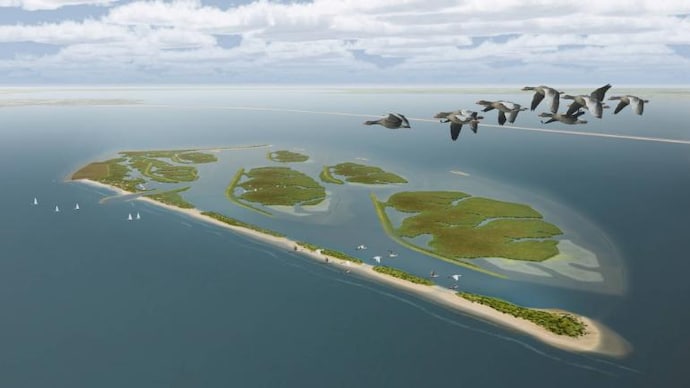Netherlands is building artificial islands on water to preserve wildlife in one of Europe's largest re-wilding projects
The Dutch will be building an archipelago on a 700 square kilometers expanse of water body to protect the biodiversity and wildlife of the area.

A new artificial archipelago of five islands will be developed on the Markermeer lake in Netherland by the Dutch to bring nature back to the area. It will be a typical engineering project for a low-lying country.
According to Andre Donker, a Dutch ranger, it is one of the largest rewilding operations in Europe.
About the project to create artificial islands

The archipelago will be developed on this vast 700 square kilometer (270 square miles) expanse of water body. This lake was lacking any aquatic life until recently.
The project, initiated by Natuurmonumenten, a Dutch non-governmental organisation working for the preservation of nature, costs 60 million euros (USD 68 million). Much of the money is donated by individuals.
The Dutch used an innovative technique, forming the small islands or islets with silt, a sedimentary formation halfway between clay and sand.
The Project Head at Boskalis, Jeroen van der Klooster said building an island with sand is a common technique used all over the world, but the use of silt in this project is unique.
The team will dig a 1,200-metre corridor on the main island to allow the silt, led by strong ocean currents to form marshy areas, fertile soil and reservoirs where migratory birds can eat.
History of the lake Markermeer

The lake was once part of the Zuiderzee, an engineering wonder of the world completed in 1932, which closed off a huge expanse of water to keep out the North Sea and combat flooding.
It is vital in a country where 26 per cent of the land is below sea level, the scheme created an inland lake and polders, land reclaimed from the sea, but at a cost to the environment.
Over the subsequent decades, sediment used to create a dyke separating the Markermeer from a neighbouring body of water, the Ijsselmeer, washed away and sunk to the bottom of the lake.
That turned the water cloudy, negatively impacting fish and bird populations, plants and molluscs.
Still-sparse vegetation covers a large part of the 700 hectares that have been built anew in the lake.
Recent initiatives to turn the lake into a home for aquatic life
The islet plan is among many being worked on by the Netherlands, which is one of the most vulnerable countries in the world to climate change.
Since October, the port city of Rotterdam has hosted the headquarters of an international climate commission led by former UN secretary-general Ban Ki-moon and Microsoft founder and climate activist Bill Gates.
How this lake is helping re-introduce plants and animals
- The five small islands were built in two and a half years and have already served as a resting place for 30,000 swallows this year.
Experts recently counted 127 kinds of plants in the area, most of which have been brought in by windborne seeds.
- In the water, there is home for a huge number of plankton that guarantees a large amount of food for the birds.
- Three wooden bird observatories, a house for the island's guardian, 12 kilometres of footbridges and unpaved roads have also been built on the main island, which is open to the public.
